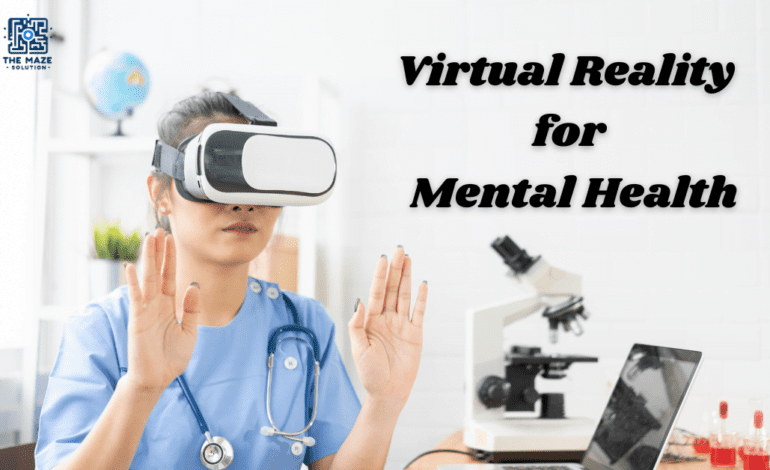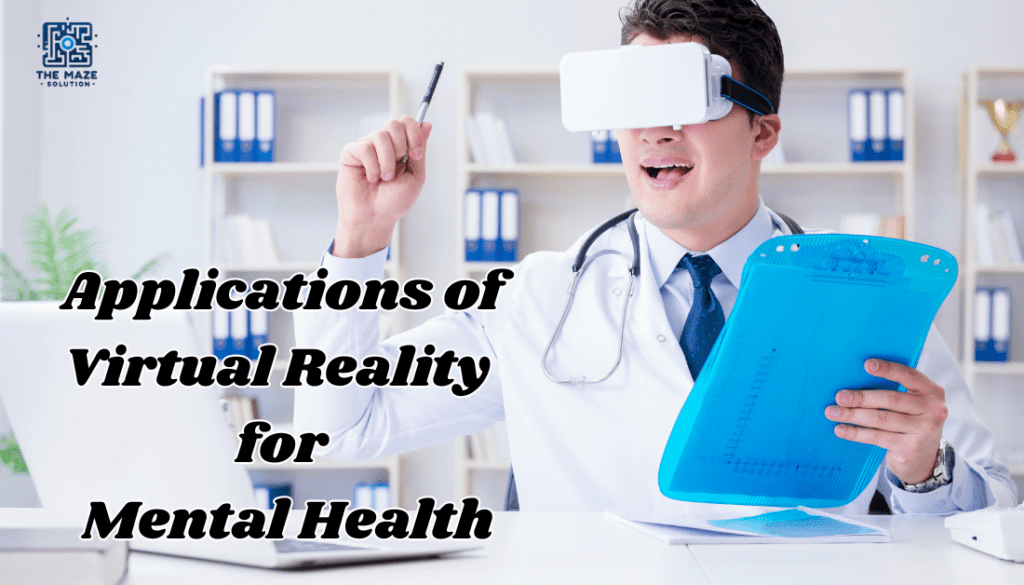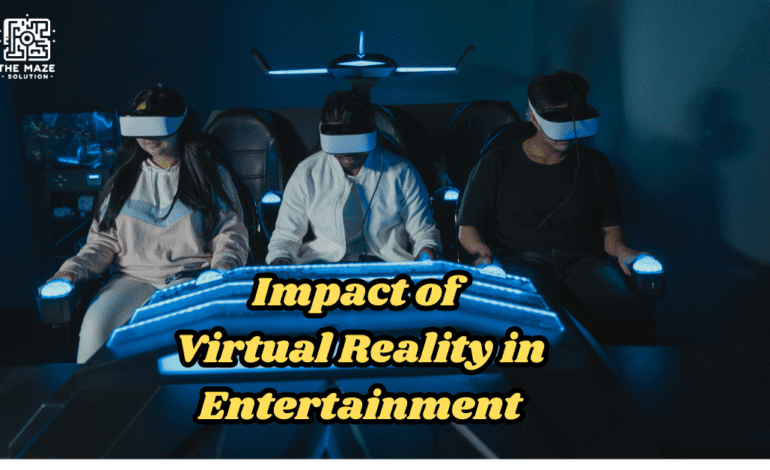How VR is Revolutionizing Mental Health Care: Applications and Benefits

The integration of technology into healthcare has been growing at an unprecedented rate, bringing about revolutionary changes in how treatments are administered. One of the most exciting advancements is the use of Virtual Reality (VR) in mental health care. In this blog post, we will explore how VR is revolutionizing mental health care, focusing on specific applications and benefits that make this technology a game-changer for mental health advocates, tech enthusiasts, and healthcare professionals.
Understanding VR for Mental Health
What is VR for Mental Health?
Virtual Reality is a simulated experience that can mimic or completely differ from the real world. Consisting of a headset, sensors, and software, VR creates immersive environments that engage multiple senses. When adapted for mental health applications, VR becomes a powerful tool for treating various conditions by providing controlled, interactive, and engaging experiences tailored to therapeutic needs.
Currently, VR technology in the mental health sector involves specialized programs designed to address conditions like anxiety, PTSD, depression, and more. These programs are developed with input from psychologists, psychiatrists, and technologists to ensure they meet clinical standards and offer effective treatment.
Why Virtual Reality for mental health is Gaining Traction in Mental Health Care
VR offers unique advantages for mental health treatment that traditional methods can’t match. It allows for controlled exposure to stimuli in a safe environment, making it particularly effective for conditions like phobias and PTSD. Unlike traditional therapy, which relies heavily on verbal communication, VR engages patients in interactive experiences that can lead to more meaningful progress.
The growing interest among mental health professionals in VR can be attributed to its ability to provide measurable outcomes and data-driven insights. Therapists can track a patient’s progress through the VR software, allowing for more personalized and effective treatment plans.
Key Applications of Virtual Reality for Mental Health

VR for Anxiety and Phobia Treatment
One of the most well-known applications of Virtual reality in mental health is its use in exposure therapy for treating anxiety and phobias. Through Virtual reality , patients can confront their fears in a controlled, virtual environment. This method has been shown to be highly effective in reducing anxiety levels and helping individuals overcome their phobias.
For example, VR programs can simulate situations like flying, public speaking, or encountering spiders, allowing patients to gradually face these fears with the guidance of a therapist. Case studies have demonstrated significant improvements in patients who have undergone VR-based exposure therapy.
Applications of VR for PTSD Therapy
Post-Traumatic Stress Disorder (PTSD) is a condition that can severely impact a person’s quality of life. VR offers a novel approach to PTSD therapy by recreating traumatic events in a controlled setting, allowing patients to process and cope with their experiences safely.
A notable example is the use of VR in treating veterans with combat-related PTSD. By simulating battlefield scenarios, VR helps patients confront and reframe their traumatic memories, leading to improved mental health outcomes.
Virtual Reality for Depression and Mood Disorders
Depression and mood disorders can be challenging to treat with conventional methods alone. VR has shown promise in this area by creating immersive environments that promote relaxation and positive mental states. For instance, guided VR meditations or peaceful virtual landscapes can help alleviate symptoms of depression and improve overall mood.
Research indicates that VR can complement existing therapies by providing an additional layer of engagement and motivation for patients. This approach can be particularly beneficial for individuals who struggle with traditional forms of therapy.
VR in Cognitive Behavioral Therapy (CBT)
Cognitive Behavioral Therapy (CBT) is a widely used treatment for various mental health conditions. VR enhances CBT sessions by offering interactive scenarios that help reinforce positive behavioral changes. Patients can practice real-life skills in a virtual setting, making the transition to real-world applications smoother.
For example, a VR program might simulate social interactions for someone with social anxiety, allowing them to practice communication skills and build confidence in a low-pressure environment.
Applications of Virtual Reality for Mental Health Rehabilitation
Virtual reality is also making strides in mental health rehabilitation by providing tools for cognitive rehabilitation and skill-building. These programs are designed to improve cognitive functions such as memory, attention, and problem-solving, which can be impaired in individuals with mental health conditions.
Patients can engage in activities that mimic daily living tasks, helping them regain independence and improve their quality of life. This approach has proven effective in settings like psychiatric hospitals and rehabilitation centers.
The Benefits of Virtual Reality in Mental Health Care
Enhanced Patient Engagement
One of the most significant benefits of VR in mental health care is its ability to increase patient engagement. Traditional therapy methods can sometimes feel repetitive or abstract, leading to disengagement. VR, on the other hand, offers immersive experiences that captivate patients’ attention and make therapy sessions more enjoyable.
When patients are more engaged, they are more likely to stick with their treatment plans and achieve better outcomes. Examples of this include patients who report looking forward to their VR therapy sessions, treating them more like exciting adventures than medical appointments.
Controlled and Safe Therapeutic Environments
Virtual reality provides controlled environments where therapists can gradually introduce patients to stimuli that trigger their symptoms. This controlled exposure is crucial for conditions like anxiety, phobias, and PTSD, where sudden exposure can be overwhelming.
By offering a safe space for patients to confront their fears, Virtual reality allows for gradual desensitization and coping skill development. Patients can face their triggers without the risks associated with real-world exposure, making the therapeutic process both effective and safe.
Customization and Personalization of Treatment
Every patient’s needs are unique, and Virtual reality allows for the customization of treatment plans to fit individual requirements. Therapists can tailor Virtual reality experiences to address specific symptoms, preferences, and progress levels, ensuring a personalized approach to mental health care.
For example, a patient with a fear of heights might start with a VR experience that simulates standing on a low balcony before gradually progressing to higher altitudes. This level of customization can significantly enhance the effectiveness of treatment.
Accessibility and Scalability of VR in Mental Health
VR has the potential to make mental health care more accessible to diverse populations. Traditional therapy may not be readily available in remote or underserved areas, but VR can bridge this gap by offering virtual sessions that patients can access from home.
Furthermore, VR can scale to meet the needs of large populations, providing a cost-effective solution for mental health care. This scalability is particularly important in addressing the growing demand for mental health services worldwide.
Data-Driven Insights for Better Outcomes
Another advantage of Virtual reality in mental health care is its ability to collect data on patient interactions and progress. This data can provide valuable insights that help therapists refine treatment plans and improve outcomes.
For instance, VR software can track how patients respond to different scenarios, identify patterns in their behavior, and measure the effectiveness of various interventions. These insights can inform evidence-based practices and lead to more effective treatments.
Challenges and Future Directions for VR in Mental Health
Technical and Ethical Challenges
While the benefits of VR in mental health care are significant, there are also technical and ethical challenges to consider. Implementing VR requires advanced hardware and software, which can be costly and require technical expertise.
Ethical considerations include patient privacy and data security. Ensuring that patient data is protected and used responsibly is crucial in maintaining trust and safeguarding sensitive information.
The Future of VR in Mental Health Care
The future of VR in mental health care looks promising, with ongoing advancements in technology and research. Innovations such as more realistic simulations, haptic feedback, and AI-driven customization are on the horizon, potentially enhancing the efficacy of VR interventions.
Future research will likely explore new applications for VR in mental health, including its use in preventive care and long-term mental wellness. As VR technology continues to evolve, its role in mental health care is expected to expand.
Integrating VR into Mainstream Mental Health Treatment
To fully realize the potential of VR in mental health care, it must be integrated into mainstream treatment practices. This integration requires training and education for mental health professionals, ensuring they are equipped to use VR effectively.
Additionally, standardized protocols and guidelines for VR therapy need to be developed to ensure consistent and evidence-based practices. Collaboration between technologists, clinicians, and researchers will be essential in achieving this goal.
Conclusion
Virtual Reality is transforming mental health care by offering innovative solutions that enhance patient engagement, provide safe therapeutic environments, and allow for personalized treatment plans. Its applications in treating conditions like anxiety, PTSD, depression, and more are proving to be highly effective.
As VR technology continues to advance, its potential to revolutionize mental health care grows. Mental health professionals, tech enthusiasts, and advocates are encouraged to explore VR solutions and consider how they can be integrated into their practices.
By staying informed and open to new possibilities, we can harness the power of VR to improve mental health outcomes and provide better care for those in need. Share your thoughts and experiences with VR in mental health care, and let’s continue this important conversation.





